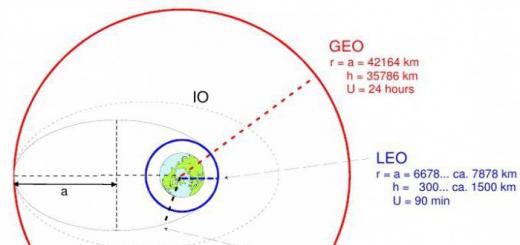In the Chelyabinsk region of Russia there is a unique archaeological value from the past. It's ancient city of Arkaim. What is known about him, and what assumptions about the origin of Arkaim do scientists have, we will consider in this article.
In general, they cause a lot of controversy and discussion among researchers, and it is hardly possible to name at least one such find, the opinion of which would not have alternative views.
How Arkaim was discovered
In 1987, two Soviet scientists S. G. Botalov and V. S. Mosin were sent to the Chelyabinsk region in order to explore the area for archaeological finds.
The fact is that it was planned to create a reservoir at this place, and according to the rules, such a project could not be carried out without an archaeological study of the territory.
Botalov and Mosin slowly set to work. Local schoolchildren and enthusiasts helped them in their work. Of course, they soon discovered extremely unusual reliefs. It was soon established that they were recorded by military cartographers back in 1957.
Arkaim from a bird's eye view
However, due to the fault of the negligence of the leadership, or the ignorance of the decision makers, this territory was still planned to be flooded.
Then the director of the Hermitage B.B. Piotrovsky, as a result of which the ancient monument, that is, the city of Arkaim, was not touched.
Information about the city of Arkaim
First of all, it should be said that Arkaim is a very small territory. It's hard to even call it a city. Rather, it is a fortified settlement.
The diameter of Arkaim is 170 meters. However, it should not be forgotten here that the age of the find is approximately 4 thousand years, and for that time such scales were considerable.

The city is surrounded by two walls. The outer wall, 5 meters thick and 5.5 meters high, had 4 entrances. An outer ditch 2 m deep was dug around Arkaim. In other words, the city was quite seriously protected from an external enemy.
Inside Arkaim there were apartment buildings. In the center was a square for meetings of residents.
The animals lived outside the city, although it is assumed that in moments of emergency they were taken inside.
 Reconstruction of the city of Arkaim
Reconstruction of the city of Arkaim  Museumified excavation on two dwellings of Arkaim
Museumified excavation on two dwellings of Arkaim Despite the powerful outer wall, Arkaim also had an inner wall 3 m thick. It had only one entrance, and in order to get to the city center, it was necessary to go through the entire district street.
What's inside Arkaim
There were many structures in the middle of Arkaim. Most of them are built of logs and clay, although there are buildings made of dried bricks.
Pottery workshops, metallurgical industries and various public institutions were also found here.
An interesting fact is that the inhabitants of Arkaim 4 thousand years ago managed to think over and implement a storm sewer system so that all waste was removed outside the city.
Residents of Arkaim
Scientists agree that representatives of the Caucasoid race lived in the ancient city of Arkaim. This was proved by reconstructing the skulls found there.
By the way, various finds, one way or another connected with this mysterious place, can be found in the museums of Chelyabinsk.
The death of Arkaim
It is believed that the ancient city was destroyed by fire. However, there is no reliable information about when this happened.
Moreover, researchers cannot even answer the question of how long this amazing fortress existed.
It is quite possible that the cause of Arkaim's death was set on fire or attacked by enemies. Or maybe just an accident.
Country of Cities and Arkaim
The discovery of Arkaim became the reason for an in-depth study of the entire area adjacent to it. Thus, on the territory of about 350 km, many settlements similar to Arkaim were discovered.
The vast majority of them were built according to one type. This whole complex received a common name - the Country of Cities.
That is, we can reasonably say that at that time a fully developed civilization existed in this territory.
 Panoramic photograph of the surroundings of Arkaim
Panoramic photograph of the surroundings of Arkaim I must say that archaeological work is being carried out there to this day, and one can only hope that sooner or later, scientists will be able to find out the secret of Arkaim.
- The first information about the find appeared in 1957.
- In 1987, the first work began on a detailed study of the area.
- The total area of the city walls is about 20 thousand m².
- The central square has dimensions of 25x27 m.
- The outer wall had 35 dwellings, the inner wall had 25.
- Apparently, art was developed in Arkaim, as various figurines and intricate pottery were found in the city.
- Wells, pantries, kitchens with hearths and bedrooms were found in many houses of the city. Almost all the inhabitants produced wooden products and weapons, and were also engaged in modeling and tailoring.
- The most demanded and popular professions were blacksmiths and casters.

The secret of the city of Arkaim
Of course, like any such find, the city of Arkaim attracts not only scientists, but also lovers of mysticism. Esotericists of all stripes claim that Arkaim is the cradle of civilizations and a place of colossal extraterrestrial power.
These rumors became especially aggravated after Vladimir Putin made a trip there in 2005.
However, in fairness, it should be noted that the city of Arkaim is located at the same latitude as Stonehenge and the Amur Pillars. Whether this is a coincidence or not is unknown.
In conclusion, I would like to add that pseudo-scientists tend to exaggerate the significance of the ancient city of Arkaim, considering it a supernatural source of power and an ancient observatory for communication with other worlds.
Of course, these fantasies have no basis, which in no way diminishes the value, significance and uniqueness of Arkaim for the study of past civilizations.
If you like interesting facts and self-development - subscribe to. Develop with us!
Today, there are thousands of mysterious places around the world. Many of them are called mystical or anomalous. People disappear there, time slows down there, things fly, ghosts appear. The most famous are the mysterious Bermuda Triangle and the English Stonehenge. But few people know that in terms of the number of anomalous and mystical places, Russia confidently takes first place. (I wish it were like this in the economy...) Perhaps this is due to the fact that the territory of Russia is the largest. Nevertheless, there are plenty of truly creepy, scary, anomalous and mystical places in Russia.
Of all the known places, 10 of the most anomalous can be distinguished. We will devote a separate article to each of them.
And let's start with the most interesting place in Russia - the ancient city of Arkaim. It is he who has been leading the list of the most anomalous places in Russia for the third decade.
Arkaim. Chelyabinsk region
Photo: arkaim-center.ruToday "Arkaim" is a historical and cultural reserve, the largest scientific center. Among all the archaeological sites in Russia, this one is without a doubt the most mysterious.
Strange concentric circles, more precisely, a spiral of stones laid out in an ideal circle, was discovered in 1987 by a military satellite flying over the Southern Urals. The space image was handed over to the Ministry of Defense, after a lot of brainstorming, it was handed over to the USSR Academy of Sciences. There, too, they grabbed their heads: where did this miracle come from in the Ural steppe?
 Photo: paranormal-news.ru
Photo: paranormal-news.ru Archaeologists from the Chelyabinsk State University were hastily sent to this area, and they, flying over the river valley, saw these circles with their own eyes near Mount Arkaim. This is some kind of message left to us, earthlings, or a landmark for landing a spaceship, the scientists decided. In addition, it turned out that this is a zone of increased anomalous activity. Time slows down here, and the compass needles go crazy. Moreover, in these places, people's blood pressure increased, their pulse quickened, hallucinations began.
Worldwide discovery
Archaeologists got down to business and discovered here the ruins of an ancient city. Forty centuries - this is how old he was determined by radiocarbon dating. No one really knows what this city was called: no written sources have been preserved.
One thing is known today: Arkaim was one of the first cities on Earth. Homeric Troy turned out to be five or six centuries younger than him. It is older than the Egyptian pyramids.
The very first excavations revealed a part of a thick, about 5 m, wall. It looked like a twisted spiral with a square in the center. “Yes, this is a model of the Universe overturned on Earth!” gasped paleoarchaeologists and astrophysicists. Who only from the representatives of the scientific community did not visit Arkaim in those days. Discoveries poured in like from a cornucopia. His observatory turned out to be the most complex of all known to mankind. The Arkaimians knew about the movement of the earth's crust along a circular cone with a period of 25,786 years!
We talked about the discovery of a planetary scale. We got to the Central Committee. And then it turned out that the world-class monument was in danger - the USSR Ministry of Land Reclamation planned to flood this territory, create a reservoir for irrigation of state farm lands. Where did the discoverer of Arkaim, professor-archaeologist G. B. Zdanovich go!
 Model of Arkaim
Model of Arkaim Everywhere they shrugged: on this score, they say, there is a resolution of the Central Committee. Gennady Borisovich urgently left for Moscow, to the Academy of Sciences. But he did not find the President of the USSR Academy of Sciences Rybakov in his place, he ended up abroad. Then he rushed to Leningrad to Academician B. B. Piotrovsky, but there was also bad luck: the Academician’s working day was scheduled by the minute, and at that moment he was receiving a delegation of foreign scientists.
And then Zdanovich went to the extreme: he asked the secretary to hand over to the academician a fragment of ceramics with an ornament from the ancient swastika - the symbol of the sun among the ancient Aryans - and a photograph depicting giant circles. In less than a minute, a breathless academician burst into the strange visitor: “Where did you get it from, my friend? From the Urals? Well, don’t torment your soul, tell me…”
After listening to the guest's excited story, Piotrovsky grabbed the Kremlin turntable: "Dear lady, I would like the Central Committee, comrade Yakovlev, please ..." Zdanovich left the northern capital inspired: the decision of the Central Committee was canceled, Arkaim was declared a state reserve.
Death of Hyperborea
Why was the world-famous academician so alarmed?
Arkaim could turn out to be the ancestral home - the source of an ancient civilization that gave rise to many peoples, including Russian. Later this hypothesis was confirmed.
But where in the south of the Urals, in the endless steppe, could this mysterious city appear? On this score, scientists had a lot of assumptions. Not all of them are linked with our modern knowledge and ideas. Even a cosmic hypothesis is put forward.
How is it that the ancient inhabitants of this city possessed the knowledge that we are only trying to achieve? Why are the walls of Arkaim oriented strictly according to the stars, one of which is Sirius? In search of a clue to this phenomenon, enthusiastic researchers turned to the ancient Indian epic Mahabharata, to the Book of the Great Exodus. And everything fell into place.
The book tells about the exodus from Daaria (Hyperborea) of tall fair-haired gods who arrived on Earth from a distant planet. Fleeing from the Great Cold and the Flood, they came to the very edge of the Riphean (now the Ural) mountains. With pain in their hearts, they left the blessed land beyond the Arctic Circle, where before the onset of glaciation a subtropical climate reigned and real gardens of Eden bloomed.

The great cold was caused by the fall of a huge comet, after which the great abyss washed away part of their Arctida. They set off in a great caravan to the south and after many days of march they chose the picturesque valley near Mount Arkaim, where they began to build a city using the knowledge of their ancestors.
It was built according to a mathematically verified drawing, strictly oriented towards the stars and the sun. Today, scientists have compiled a computer model of the city. The ancient metropolis looked extraordinarily beautiful, buried in greenery.
Ideally round, with high towers, outside it was lined with colored bricks. On the roofs of the dwellings there was a street for pedestrians and chariots. The center was occupied by an observatory. The four entrances to the city formed a swastika pattern.
 Photo: venividi.ru
Photo: venividi.ru This sacred symbol of the sun was used by Ancient India, Iran, Egypt, Maya Indians, and later Russia. The inhabitants of Arkaim - tall, handsome - judging by the study of the burials, they rarely got sick. They were engaged in agriculture, cattle breeding, pottery. And when they found a mine with reserves of copper pyrites near the city, they began to smelt copper. Caravans with bronze axes, knives, handicrafts of artisans stretched from Arkaim to Iran, India, Greece, and reached the great Sumerian kingdom.
Everywhere, tall fair-haired people were met with respect, revering them as demigods for their great intelligence and knowledge, for their selflessness and friendliness. Among them were skilled healers who knew the secrets of unearthly medicine. And in astronomy they had no equal - and it could not be otherwise, if the Arkaimians from early childhood were accustomed to the knowledge of their great ancestors.

Together with a lullaby, they were told about the distant ancestral home on Sirius and about the abandoned Hyperborea ... When the glacier came down, they sent their scouts there. But they returned with nothing: the ocean flooded their blessed country. The dream of returning collapsed overnight. Then they began to wait for news from a distant ancestral home that came to them in dreams. And one of the dreams became prophetic.
The high priest announced about him: “Wait for dear guests, residents of Arkaim!” Most likely, giant drawings were then laid out of stones for them. How they did this is not yet available to our minds, as if someone from the sky drew circles on the earth with a giant compass. But what a wonderful landmark for landing a spaceship!
What did the Rig Veda say?
In 2683 B.C. e., as follows from the ancient epic Rig Veda, a large spaceship with 200 messengers from Sirius made an emergency landing in the Arkaim valley. One can only imagine with what joy the people of Arkaim greeted them. Since the forced migration from Hyperborea, they have lost some of their knowledge - and those who arrived have replenished it. They also became mentors in enduring hardships.
 Photo: samopoznanie.ru
Photo: samopoznanie.ru Arkaim was constantly besieged by nomads. Those who arrived did not interfere, they did not have the right to use something that could instantly turn enemy cavalry into dust. However, the inhabitants of the fortress themselves managed to fight back, launching dozens of war chariots against the besiegers ... And then a ship flew in for the guests. Maybe then, in parting, the Arkaim stonemasons carved a stone idol, looking longingly into the sky ...
Great Exodus
The inhabitants of Arkaim, having seen off the guests, decided to leave the valley forever: the ore reserves ran out, the caravans with goods stopped coming ... Hastily gathering, capturing what they needed, they left the city, setting it on fire - most likely, they did not want to leave Arkaim to be plundered by nomads. On the way, they split up: some headed for India, which reminded them so much of Hyperborea, others chose the lands of Iran and the great Sumer, and still others headed for the mountains of Tibet.
So it is in the ancient epic Rig Veda. In the Book of the Great Exodus there are these lines:
“An unknown race of tall white blond-haired demigods came to India from a country on the very edge of the Riphean mountains. They brought knowledge with them, and this happened after the departure of the Buddha into nirvana (in the summer of 13019 from the Great Cold according to the Vedic calendar).
Having laid the foundation for many modern peoples, they have sunk into oblivion, forty centuries later forcing us to puzzle over the purpose of the giant circles in the Ural steppe.
Ancient city of Arkaim, located in the Chelyabinsk region, is a real secret of the distant history of mankind. By right, Arkaim can be considered one of the most significant archaeological sites. An interesting fact is that the discovery of this unique city of antiquity was made by only two scientists (S. G. Botalov and V. S. Mosin), who were sent on a standard task.
It was in 1987. For the needs of the local irrigation system, it was necessary to build a reservoir. According to the then rules, before implementing such ideas, it was required to explore the area for archaeological finds.
Both scientists rather dejectedly began to study the Ural steppe. They were helped by schoolchildren from neighboring areas and enthusiasts. Quite quickly, archaeologists discovered unusual reliefs that were first noticed by military cartographers back in 1957.
Arkaim from a bird's eye view
However, despite the obvious importance of the find, the construction zone of the economic system should have been flooded. And only thanks to the persistent and principled position of director B.B. Piotrovsky managed to defend this unique historical monument.
To date, the complex has been restored in many of its aspects. By the way, Arkaim is named after the name of the nearby one. But let's see what characteristics this mysterious reserve has.
The ancient city of Arkaim
Many interesting facts are connected with this place. We will only talk about the main things, in our opinion.
So, the diameter of the city, or, as it is more accurately called, the fortified settlement of Arkaim, is only 170 meters. By modern standards, this is not much, but given that these structures were built at least 4 thousand years ago, you are involuntarily surprised at the details.
 Aerial view of the ancient city
Aerial view of the ancient city Arkaim is surrounded by two walls, and inside there are apartment buildings. A ditch with water was built around the fortress, with an average depth of 2 meters, to protect against an external enemy. The outer wall, which had four entrances, was almost 5 meters thick at a height of 5.5 meters. The square was in the center. People lived and worked in the city, while animals grazed outside the walls and climbed inside only in case of emergency.
The inner seven-meter wall was 3 meters thick and had only one entrance. To get to the central part of the city, it was necessary to go along the entire length of the ring street.
 Reconstruction of the city of Arkaim
Reconstruction of the city of Arkaim  Museum excavation on two dwellings
Museum excavation on two dwellings Almost all buildings are made of ordinary logs, which are stuffed with clay inside. There are also structures made of dried (not fired) bricks.
Workshops, pottery and metallurgical production, as well as premises for public and private use were found in the Arkaim fortress.
Around the settlement, a storm sewer was provided, which diverted water outside the fortress.
According to scientists, this place was inhabited by representatives of the Caucasian race. Reconstructions of the skulls of men and women from Arkaim can be found in Chelyabinsk museums.
It is not known for certain how long this fortress existed. It was possible to establish only the fact that the city was destroyed by fire. What it was - arson, an accident or an enemy attack - is also unclear.
Arkaim and the Country of Cities
Be that as it may, but this unique reserve has become the basis for many studies in general and the discovery of a large archaeological complex - the Country of Cities in particular. Scientists have revealed many interesting facts related to this settlement.
So, on a fairly large area (about 350 kilometers), many fortresses were found, built according to the type of Arkaim, which indicates a well-established civilization of that time.
 Panoramic photograph of the surroundings of Arkaim
Panoramic photograph of the surroundings of Arkaim This territory today is called the Country of Cities. History has not preserved any exact information about the Country of Cities, therefore all hopes for restoring the past are placed only on archaeologists. By the way, excavations and research are still being carried out here, in which outstanding scientists from many countries of the world take part.
- The monument was first discovered by cartographers in 1957. However, no studies have been undertaken.
- In 1987, a cultural center was opened, and active research work was carried out.
- The walls of Arkaim, consisting of two rings, have a total area of 20,000 square meters.
- The central square, which, apparently, served as a place for some ritual actions, measured 25x27 meters.
- 35 dwellings were found near the outer wall, 25 dwellings near the inner wall.
- Artistic figurines and ceramic vessels were found in Arkaim.
- Wells, pantries, kitchens with hearths and bedrooms were found in the houses. In each courtyard there was a small workshop where they were engaged in modeling and sewing clothes, carpentry and preparing weapons. The most common artisans were blacksmiths and casters.

Arkaim - the ancestral home of the Aryans and Slavs
I must say that this unique archaeological reserve attracts many people. In 2005 he came here, in connection with which there were rumors that this was a real source of extraterrestrial power. Esotericists in their own way interpret this place as the cradle of human civilization in general.
You can often hear that it is here that the most powerful energy flows of the earth pass. It is worth adding that the village of Arkaim is located at the same latitude as, which are also considered "places of power."
Mikhail Zadornov is among the active propagandists of this point of view. It is important to emphasize here that in pseudoscience, when it comes to Arkaim, its development is greatly exaggerated. On the net you can find detailed descriptions of the fact that this complex served almost as an observatory for communication with space. Of course, such fantasies have no basis.
Of course, Arkaim is a great historical and architectural monument, but it is unlikely that such antiquity will ever be explained. This, unfortunately, remains the lot of scientific hypotheses and assumptions.
Liked the post? Press any button:
-
 The mystery of the death of the Dyatlov group
The mystery of the death of the Dyatlov group -
 Machu Picchu: the secrets of the city of the Incas
Machu Picchu: the secrets of the city of the Incas -
 Yellowstone volcano is a looming disaster
Yellowstone volcano is a looming disaster -
 Tunguska meteorite and its mystery
Tunguska meteorite and its mystery
Arkaim ancient city
Arkaim was discovered by an expedition led by Chelyabinsk archaeologist Gennady Borisovich Zdanovich. Before the flooding of the Bolshaya Karaganka river valley, archaeologists were called. The first shards were found by two ninth graders. When the professionals came after them, under their feet were the remains of a round city with a diameter of one and a half hundred meters. Regardless of the archaeologists, an almost perfect circle, divided into narrow sectors, was seen on an old aerial photograph of 1956 by Iya Mikhailovna Batanina, a prospecting geologist. Then she began to work with Zdanovich.
Both before and after the discovery of Arkaim, round, oval, rectangular cities of the Bronze Age were found in the steppes in the south of the Chelyabinsk region. All of them are located at a distance of several tens of kilometers from each other. Today, 22 such cities are known. And the whole area - 400 kilometers from north to south and 200-300 kilometers from west to east - historians of the Bronze Age call the country of cities. For that time - XVIII-XVI centuries. BC. - the very concept of "city" is very unusual. If there were cities, then in Egypt, Mesopotamia, in the Middle East. But in the Southern Urals! It threatened to revolutionize history.
The settlement discovered in the Southern Urals corresponds in time and importance to such large centers of early urban civilization as Dashly in northern Afghanistan, Sappali in southern Turkmenistan, Troy VI in the northwest of Asia Minor. Arkaim ancient settlement reflects the process of involving the Ural-Kazakhstan region into the circle of world cultures with highly developed metallurgical production. The unique preservation of the monument and the outstanding scientific value set the task of its comprehensive and complete study. Academician B. Rybakov.
Arkaim, a contemporary of the Egyptian Middle Kingdom, the Cretan-Mycenaean culture and Babylon, differs from these ancient centers of civilization in three exceptional features: people of the European race lived here, fire worshipers, the predecessors of the Aryans. Right in the residential buildings there were furnaces for smelting copper and bronze, from which weapons and household tools were made; skeletons of horses and wheels from chariots were found in the burials of the Arkaimians, which means that in the Southern Urals, for the first time, probably on earth, a horse was tamed and harnessed to a war chariot.
We wander around the ancient settlement together with Alexander Mikhailovich Kislenko, an archaeologist, head of the museum in the Arkaim reserve. The round city is right under our feet, but it is not visible. Or rather, I can't see it. An experienced archaeologist's eye distinguishes slight swelling of the soil layer in those places where the defensive walls stood. - Look, where the grass is yellower, there were walls: clay remained, so the humus layer is thinner, so the grass does not grow so violently. In the lowlands, between the walls, moisture lingers better, the humus layer reaches half a meter, and the grass is brighter. And look at the circles of bright green lush grass - there were ancient wells in these places. By the way, we unearthed one of them. And all summer they drank the purest “ancient” water from the same aquifer as the inhabitants of Arkaim.
The walls of the city rose in two circles. Inside these circles there were houses in the form of elongated sectors with an area of 150-180 square meters. m. Moats ran along the round walls. The outer one is defensive, while the inner one is for sewerage. The back wall of each house was at the same time defensive. They were made of wood and covered with clay. And from the outside, the walls were lined with dried clay. It seemed to be the simplest technology, and the strength provided such that Arkaim could successfully resist tanks.
But the most striking thing, of course, is the metallurgical furnaces that literally stood in every yard (as in China during the Great Leap Forward under Mao Zedong). Archaeologists have not seen such stoves anywhere else: they are adjacent to wells. Due to the sharp temperature difference, a huge thrust and a very high melting point were created. That is why the local metallurgists have mastered the smelting of bronze, a more perfect alloy than copper. In the ancient religious texts of the Zoroastrians, G. Zdanovich found an indication that in order to melt metal, it is necessary to combine water with fire. Before the discovery of Arkaim, no one could understand this mysterious phrase.
The Avesta, the sacred book of the Zoroastrians, says that Agni, the god of fire, is born from dark mysterious waters. Doesn't this explain the strange connection between furnaces and wells? The city of a round shape is not only beautiful, but very rational: it saves maximum heat and saves building materials. Judging by the finds, no wars have raged in Arkaim during its one and a half century history. The population left the city slowly, having cleaned everything and taking away their belongings. This means that it was not an attack by enemies, not a natural disaster that prompted people to leave their homes. The abandoned city was put on fire. Why is not exactly known. Maybe in this way the fire worshipers cleansed their place of residence after themselves?
Where did the Arkaimites go? Historians believe, to the south - through Central Asia to India and Iran, the famous places of residence of the Aryans. According to Alexander Kislenko, the residents of the city needed high, powerful walls not to defend themselves from enemies, but to hide the secret of bronze production. The round settlements of the “country of cities” were a kind of closed factories. And the walls were insured against industrial espionage.Be that as it may, the level of civilization of the Arkaimites, who possessed chariots, water supply and sewerage, was an order of magnitude higher than that of their contemporaries and neighbors.
During the years of perestroika and democratic Russia, among others, new pagans, Slavic fundamentalists and even outright fascists, who, without any reason, consider themselves descendants of the ancient Aryans, were drawn to Arkaim. - But how is it known that this high civilization belonged to the Aryans? - I ask the archaeologist Svetlana Yakovlevna Zdanovich, the wife of the discoverer of Arkaim.Indications that the Aryans came to South Asia from somewhere in the north are found in the Avesta and the Rig Veda. But the most irrefutable evidence is the burials dug up by us. According to the type of corpse and the objects accompanying the deceased, we can confidently conclude that these are proto-Aryans.
But the Arkaimians left behind one strange riddle. The city has 62 houses, the house had 5-6 rooms, in each of them a large family lived: at least 5-7 people. Multiply - you get one and a half to two thousand people. This is the minimum population of Arkaim. And archaeologists found only a few burials. And the chances of finding others are slim.The same "shortage" in the excavated Sintashta settlement and other settlements of the "country of cities". Where did its inhabitants go?
Chelyabinsk archaeologists adhere to this hypothesis. The beliefs of fire worshipers forbade them to defile earth, water and fire with decay. Therefore, the corpses were not allowed to be buried or burned. But what to do with them in this case? The Zoroastrians found a way out: they exposed the bodies of the dead on high stone pillars, and the steppe birds pecked at the rotting flesh. Only bones bleached in the sun were buried in clay mines (clay was not considered to be related to sacred land and isolated decay from water).
By the way, modern fire worshipers - there are very few of them, but they are found in India and Iran - act with corpses in much the same way: they build special burial towers or leave the dead on stones. Up to fifty Finno-Ugric words somehow penetrated into the language of the Aryans. Contacts between the two ancient peoples could only be carried out in the Southern Urals - there were no other adjacent territories where Aryans and Finno-Ugric peoples settled.The Aryans made a sacred priestly drink from the sacred fly agaric mushroom, which they called banghi. And among the Mansi people (a Finno-Ugric tribe living in Western Siberia), fly agaric is called pangh, it is eaten by Mansi shamans before the ritual.
In the Rigveda, the mysterious horned beast is called Sharabha, and the elk in the pronunciation of the Khanty and Mansi is called sharp. Goddess Anahita, despite the Indian heat, dressed up in a beaver coat. (Where did the beaver come from in Hindustan? Absurd.) But beavers are found in the Southern Urals, this is the southernmost habitat of their habitat. Among the Mansi peoples, the beaver is a sacred animal. The sacred insect is the bee. The word “medva” among the Aryans meant sacrifice: honey was used exclusively in sacrificial rituals. In the sacred Aryan texts, one can find references to wolves, wild boars, hares, foxes, and roe deer. All these animals live in the forest-steppe zone of the Southern Urals. But in Iran and India you just won’t find them.
Near Sintashta - the first object of the "country of cities" excavated by G. Zdanovich - a large barrow was found. Judging by the good preservation of the items of the funeral cult, it was not plundered. But there were no remains of the “owner of the VIP burial”. By age, the mound is older than the Sarmatian. So Zoroastrian. It was then that an assumption arose (of course, completely unproven so far) that this was the burial of Zoroaster, or Zarathustra, the first great prophet in the history of the religion of monotheism.
Schliemann's method justified itself in Arkaim
The famous adventurer and dreamer Heinrich Schliemann found the legendary Troy, guided by the text of Homer. Petersburg historian of architecture Leonid Gurevich actually repeated Schliemann's incident. Studying the texts of the Avesta (XVII century BC, only a century younger than Arkaim), he deducted that the first mortal of the Iranians, King Yima, built settlements to save all life from catastrophes. These settlements had the form of a triple circle: the “seeds” of the best people, livestock, birds, dogs (a kind of elite gene pool) were stored in the inner circle, the dwellings of people were located in the second circle, and cattle pens were located in the third, outer circle.
Doesn't it look like the structure of Arkaim? Only he has two, not three circles. “Search! There must be a third round,” insisted Gurevich. Moreover, in the aerial photograph of 1956, analyzed by I. Batanina, a trace of the third wall was read.So, archaeologists have found the same third wall. True, it was incomplete, it is only part of the circle. But it is remarkable, after all, that archeology - the most practical of the sciences - is confirmed by a literary source.And this is not the only case.
“Each door of the 18 has its own luminary,” says Ahuramazda, the supreme god. "What are these luminaries?" Zarathustra asks him. “Non-fading, ever-shining, just like our Moon and Sun.” Konstantin Bystrushkin, an employee of the archaeological laboratory of the Chelyabinsk State University, who worked at the Arkaim settlement, and calls himself an archaeoastronomer, found another functional purpose of the round city. In addition to the settlement, the fortress and the metallurgical plant, it was an astronomical observatory of unimaginably high accuracy for those distant times.
If today you stand in the center of the small round square of Arkaim (which I, of course, did) and look around, the surrounding hills and mountains lying above form several visual benchmarks that allow you to fix the sunrises and sunsets of heavenly bodies with their help. The peaks of the hills and mountains served as “sights” for the Arkaimites, while the “flies” were the doors mentioned in the “Avesta”, as well as windows, towers and special gutters on the roof. In total, Bystrushkin counted 18 such “sights”! 12 for measurements of the Moon and 6 for the Sun.
Then Arkaim is the same as the famous Stonehenge in Southern England. Only much more accurate, says Chelyabinsk astronomer A. Kirillov. If Stonehenge fixed only 6 positions on the celestial sphere, then Arkaim - 181. And here is a completely amazing coincidence: Stonehenge is located at a latitude of 51 degrees 11 minutes, Arkaim - 52 degrees 39 minutes. The difference between them in longitude is exactly 60 degrees - a sixth of a full circle.
Impotents settled in the mountain of Love
They say that Tamara Globa, who visited Arkaim, stumbled and fell while descending from the Snake Hill. Gravity is strengthened here, the soothsayer summed up. Since then, esoteric people have baptized Snake Hill into Shamanka (here, supposedly, shamans have been kamlali for centuries). And Grachinaya Sopka, roaring like crows in the evenings, was called the Mountain of Love (allegedly, the Arkaimites had a temple of love on it). As soon as this legend was born, those who failed in amorous affairs reached out to Grachina Hill. According to some of them, the energy of the mountain cures impotence.
For some reason, a hill near the village of Cherkasy was called the Mount of Reason. And in Arkaim, the Mount of Repentance appeared. Personally, I watched how exalted pilgrims walked along the spiral labyrinth laid out of stones at the top of the Shamanka, turning their palms to the sky. The aunt in jeans leading them shouted menacingly:- Don't talk! Focus on the good!Archaeologists and museum workers treat “esoteric tourists” with good humor: let them heal themselves. But I can see from the skeptical smirks of scientists that they do not believe in the success of miraculous healings.
The new life of Arkaim is just beginning. Roe deer, wild boars, little bustards have already returned to the reserve. The Sarmatian temir-kurgan has grown - you cannot distinguish it from the real one. A dwelling of the Eneolithic era, a Cossack estate, an alley of menhirs appeared, the silhouette of the steppe was enriched by the cone of a windmill. And whether aliens will land on the stone spiral of the Shamanka, as some “initiates” assure, the coming centuries will show.










